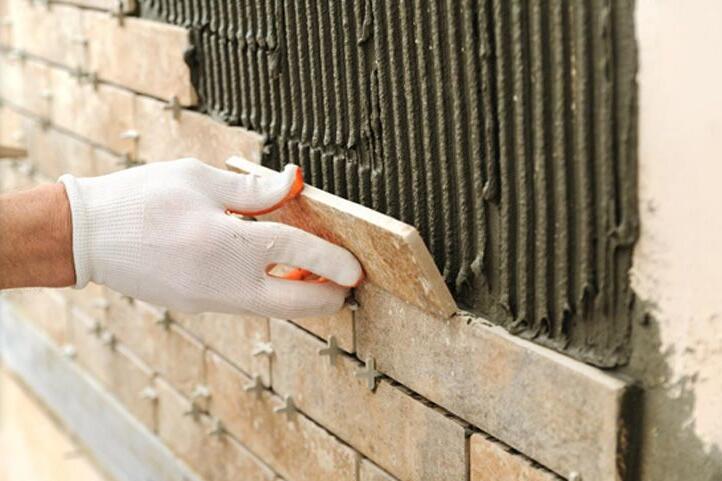Why is it important to add hpmc to tile adhesive?
Hydroxypropyl Methyl Cellulose (HPMC) is a commonly used additive in tile adhesives for several important reasons. Adding HPMC to tile adhesive formulations provides various benefits that enhance the performance and application of the adhesive in the context of tile installation. Here are some of the key reasons why HPMC is important in tile adhesive:
Improved Workability: HPMC acts as a thickening and water-retention agent. It increases the workability of the tile adhesive, making it easier to mix and apply. The adhesive becomes more cohesive and can be spread smoothly and evenly onto the substrate.
Water Retention: HPMC helps the adhesive retain water, preventing premature drying and ensuring a longer open time. This extended open time allows installers to work with the adhesive for a longer period before it sets, which is particularly beneficial when working with larger or more intricate tile installations.
Reduced Shrinkage: HPMC helps reduce the risk of shrinkage cracks in the adhesive. By retaining water and improving adhesion, it minimizes the tendency of the adhesive to shrink as it cures. This is crucial for maintaining the integrity of the tile installation over time.
Enhanced Adhesion: HPMC contributes to improved adhesion between the tile and the substrate. It helps create a strong bond by increasing the adhesive's contact area with both the tile and the substrate, resulting in a more secure and durable tile installation.
Non-Sag Properties: The addition of HPMC can impart non-sag properties to the tile adhesive. This means that the adhesive can hold tiles in place on vertical surfaces without sagging or sliding, ensuring a stable installation.
Reduced Slippage: HPMC can help prevent tiles from slipping or shifting during installation. This is especially important for large-format tiles, which may be more prone to slippage without proper adhesive properties.
Consistency: HPMC aids in maintaining a consistent adhesive mixture. It reduces the risk of segregation or separation of components within the adhesive, ensuring uniform performance across the entire tile installation.
Enhanced Durability: The use of HPMC can improve the long-term durability of the tile adhesive. By reducing shrinkage, enhancing adhesion, and preventing cracks, it contributes to a more robust and reliable tile installation that can withstand the test of time.
Compatibility: HPMC is compatible with a wide range of tile adhesive formulations, including both cement-based and polymer-modified adhesives. This versatility makes it a suitable choice for various tile installation applications.
Ease of Application: Tile installers often prefer adhesives containing HPMC due to their ease of application. The improved workability and extended open time make the installation process more efficient and less stressful.
In summary
Enhanced Adhesion: HPMC contributes to improved adhesion between the tile and the substrate. It helps create a strong bond by increasing the adhesive's contact area with both the tile and the substrate, resulting in a more secure and durable tile installation.
Non-Sag Properties: The addition of HPMC can impart non-sag properties to the tile adhesive. This means that the adhesive can hold tiles in place on vertical surfaces without sagging or sliding, ensuring a stable installation.
Reduced Slippage: HPMC can help prevent tiles from slipping or shifting during installation. This is especially important for large-format tiles, which may be more prone to slippage without proper adhesive properties.
Consistency: HPMC aids in maintaining a consistent adhesive mixture. It reduces the risk of segregation or separation of components within the adhesive, ensuring uniform performance across the entire tile installation.
Enhanced Durability: The use of HPMC can improve the long-term durability of the tile adhesive. By reducing shrinkage, enhancing adhesion, and preventing cracks, it contributes to a more robust and reliable tile installation that can withstand the test of time.
Compatibility: HPMC is compatible with a wide range of tile adhesive formulations, including both cement-based and polymer-modified adhesives. This versatility makes it a suitable choice for various tile installation applications.
Ease of Application: Tile installers often prefer adhesives containing HPMC due to their ease of application. The improved workability and extended open time make the installation process more efficient and less stressful.
In summary
The addition of Hydroxypropyl Methyl Cellulose (HPMC) to tile adhesive formulations is important because it significantly enhances the adhesive's performance and application properties. It improves workability, water retention, adhesion, and durability while reducing the risk of issues like shrinkage and slippage during tile installation. As a result, HPMC helps ensure a successful and long-lasting tile installation, making it a valuable additive in the production of high-quality tile adhesives.

评论
发表评论